Religious Life
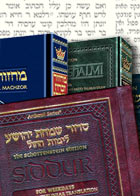 ArtScroll, Inc.
ArtScroll, Inc.Friday, May 21, 2010 | Jewish Ideas Daily » Daily Features
Since its creation in 1976, the Orthodox publishing empire known as ArtScroll has brought out hundreds of titles: English translations of classic texts like the Bible, the siddur (prayer book), the Talmud, and others as well as self-help books, histories, biographies, fiction, and even cookbooks. All are marked by traditional scholarship, decent English, handsome and often innovative typography and graphics—and an unabashedly ultra-Orthodox (haredi) viewpoint. Advertised and marketed with acumen and zeal, ArtScroll has swept the English-speaking Orthodox world and made surprising inroads among non-Orthodox readers as well. A newly published study, Orthodox by Design, provides the first scholarly investigation of the...
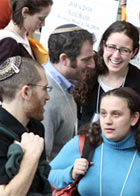 Orthodoxies
OrthodoxiesFriday, April 2, 2010 | Jewish Ideas Daily » Daily Features
"Is Modern Orthodoxy an Endangered Species?" This was the question posed at a conference yesterday in Jerusalem. Some speakers suggested that the very term "Modern Orthodoxy" doesn't fit the Israeli context or even accurately describe this slice of Jewish life. But what, indeed, is it? Like nearly all denominational labels, this one is a product of the ideological and political debates of the 19th century, as the radical options posed by modernity—including the possibilities of assimilation without conversion to Christianity and of political self-determination—scrambled traditional categories as never before. In this unprecedented situation, adherents of tradition in general and of traditional Jewish law...
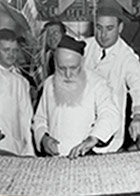 Thoroughly Modern Matzah
Thoroughly Modern MatzahThursday, March 25, 2010 | Jewish Ideas Daily » Daily Features
When Jews the world over sit down next week to mark the birth of Jewish history, matzah will figure prominently at the table. Matzah baking is an exacting task; according to traditional law, the entire process, from first kneading to exit from the oven, must be accomplished in 18 minutes flat, with not a speck of leaven in sight. For thousands of years, these specifications and others were laboriously met by hand. Yet this most ancient food has a modern history, too. The first matzah machine was invented in 1838 in France. With rabbinic approval, the technology moved steadily eastward. The...
 Eruv
EruvOne of the more obscure municipal systems knocked out of commission by late February's blizzards along the Atlantic seaboard were eruvim. These, as the New York Times explained, are networks of poles and wires that construct symbolic boundaries around Jewish communities, thus enabling the observant to carry objects through outdoor public spaces on the Sabbath. The prohibition against carrying is of ancient vintage, attested in the book of Jeremiah (17:21-22): ". . . and bear no burden on the Sabbath day, nor bring it in by the gates of Jerusalem; neither carry forth a burden out of your houses." The Talmud (Shabbat...
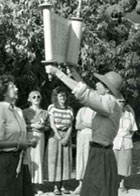 Rabbah
RabbahFriday, March 5, 2010 | Jewish Ideas Daily » Daily Features
Several weeks ago, a well-known Modern Orthodox rabbi in New York announced that a learned young woman serving in his synagogue as a teacher, preacher, pastoral counselor, and halakhic guide would henceforth be referred to as "Rabbah"—the feminine form of "Rav," or rabbi. In thus effectively ordaining Sara Hurwitz as the first female Orthodox rabbi, Avraham (Avi) Weiss set off a firestorm. The presiding body of ultra-Orthodox rabbis has ruled that Weiss himself must no longer be called Orthodox; the Rabbinical Council of America, an avowedly Modern Orthodox body, may expel him as well. No stranger to controversy, Weiss has bucked...
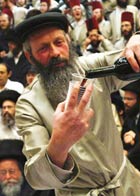 Wine
WineFriday, February 26, 2010 | Jewish Ideas Daily » Daily Features
On Purim, which falls on Sunday, Jews are commanded, among other things, to drink. While all manner of intoxicants will do, pride of place has always gone to wine, humanity's favored escape from consciousness since the dawn of recorded time. Wine, the Psalmist wrote (104:15), "gladdens the human heart." That's not all it does—which may be why the Hebrew Bible has ten different words for alcoholic beverages. Wine was offered in the Temple in worship, refrained from by priests and ascetic Nazirites. The rabbis accorded it a prominent role in ritual, not only at Purim and Passover but also on the...
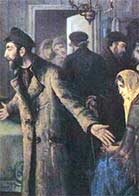 Agunot
AgunotWednesday, February 24, 2010 | Jewish Ideas Daily » Daily Features
Ta'anit Esther, the traditional fast day preceding Purim, will be observed tomorrow. In recent years it has been designated as an international day of study, reflection, and calls to action on behalf of agunot, literally "anchored" or "bound" women. In biblical and talmudic law, a marriage is dissolved upon certain proof of a spouse's death or upon the granting of a divorce (get) at the husband's discretion. Each of these halakhic requirements can leave a woman languishing for years, tortured either by her husband's uncertain fate or by his malicious will. Though technically the term agunah is reserved for the former condition, it...
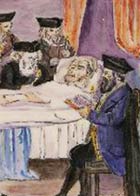 Holy Societies
Holy SocietiesFriday, February 19, 2010 | Jewish Ideas Daily » Daily Features
In the Hebrew calendar, Sunday February 21 is the seventh day of Adar, the date traditionally marking the death of Moses on Mount Nebo, overlooking Canaan, alone with God. The Lord's personal oversight of Moses' interment, in a place "unknown to this day" (Deuteronomy 34:6), inspired the rabbis of the Talmud to praise the act of burying the dead with dignity as an expression of true (because unrecompensed) kindness and indeed of imitatio dei, the injunction to follow God's ways. So it is that the seventh day of Adar is designated by tradition to honor the institution of the Hevra Kadisha, the "holy society"...
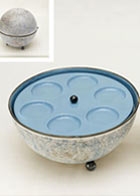 Judaica by Design
Judaica by DesignWednesday, February 17, 2010 | Jewish Ideas Daily » Daily Features
"Art for art's sake"—the idea that works of art must be judged solely on their own terms, apart from any considerations of moral, religious, or civic value—has by now become largely devoid of meaning, especially as so many artists openly hitch their work to one or another of today's political wagons. But with the lapsing of the polarities to which the phrase once gave rise, in particular those between art and religion, it has also become possible for newer generations of artists to turn their talents unapologetically to religious motifs. The results, as several recent exhibits suggest, are both intriguing and markedly uneven. Reinventing Ritual, a show from last fall at the...
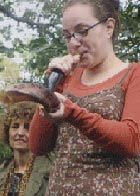 New Communities
New CommunitiesTuesday, February 16, 2010 | Jewish Ideas Daily » Daily Features
Recent years have seen a surge of new Jewish communities: experiments in communal living like Moishe House, urban kibbutzim in Israel's inner cities, back-to-nature programs combining organic farming, kashrut, and "eco-justice," and, perhaps most notably, independent minyanim in the U.S., Israel, and elsewhere. These last—communities focused principally or exclusively on prayer—shun not only the formality and organizational heft of most synagogues but also the labels and authority of denominational Judaism. Some of the most prominent have been created by Orthodox Jews seeking to make room for greater participation by women; others comprise young people experimenting with their own forms of...
Editors' Picks
9/11 and the Agunah Problem Michael J. Broyde, Yona Reiss, JTA. In the wake of the 9/11 attacks, the forensic challenge of identifying the dead went hand in hand, for Jewish families, with the grim quandary of dissolving marriages according to Jewish law.
Is Judaism a Religion? Leora Batnitzky, Jewish Week. A common assumption is that Judaism began as a religion and only gradually grew into something more broad. But this has it exactly backward.
The Month of Love Reuven Hammer, Jerusalem Post. Tonight, we inaugurate the Hebrew month of Elul—a month whose very name reminds us of the closeness and mutuality of our relationship to God.
Singing “Their” Tunes Shlomo Brody, Jerusalem Post. On the halakhic permissibility of, among other things, non-Jewish rituals and music in Jewish worship.
These Sacred Dead Adam Chandler, Tablet. Tucked away in hidden corners of Manhattan are some of the oldest Jewish burial grounds in the United States.
Rabbi in the New World Lawrence Grossman, Forward. Contradictions, or at least inconsistencies, marked Joseph B. Soloveitchik's involvement in virtually every major issue that confronted modern Orthodoxy.
The Standing Devotion Fred MacDowell, On the Main Line. In 1706, Isaac Abendana published Discourses of the Ecclesiastical and Civil Polity of the Jews; it includes a précis, reproduced here, of the 18 sections of the Amidah, the central daily prayer.
The Chabad Look Michal Kravel-Tovi, H-Net. A 200-year-old visual tradition emerges from iconic images of Lubavitch rebbes, public menorahs, replicas of the movement's headquarters in Brooklyn, and other objects of piety.
“The Stamp of My Jewish Existence” Milken Archive of Jewish Music. Born August 18, 1910, Herman Berlinski was a prolific composer of sacred music whose masterworks include a complete setting of the (Reform) Friday-evening service. (With audio and video.)
Right of Reply Joseph J. Siev, Huffington Post. On the heated response of a prominent Reconstructionist rabbi to my article concerning the present condition of his movement.

